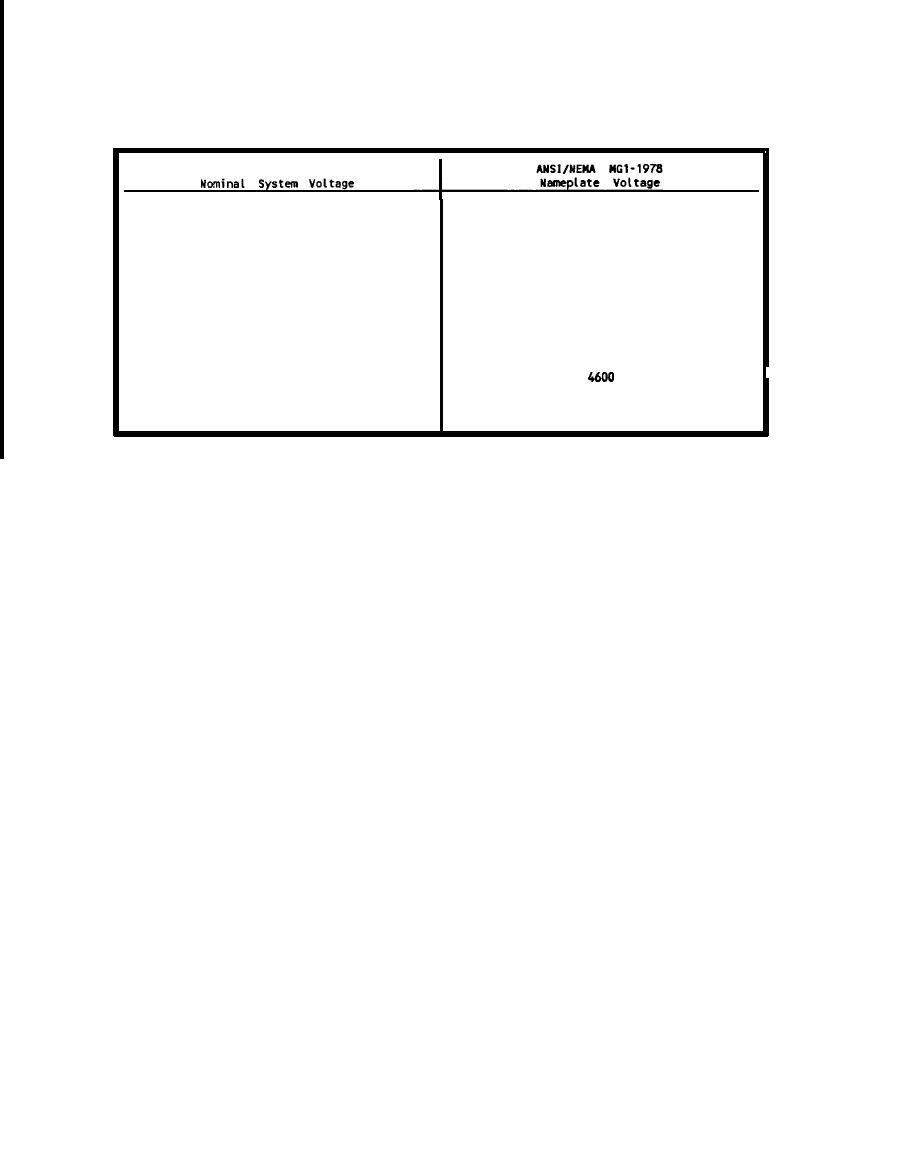

Custom Search
|
|

|
||
 TM 5-683/NAVFAC MO-116/AFJMAN 32-1083
Table 4-2. Nameplate voltage ratings of standard induction motors.
Single-phase rotors
120
115
240
230
Three-phase motors
208
200
240
230
480
460
600
575
2400
2300
4160
4000
4800
6900
6600
13,800
13,200
(a) From ANSI/IEEE Std. 141-1984
or stationary field windings. Before testing the mo-
"special order" rewinding repairs or replacements
tor insulation, de-energize the circuit. Then discon-
for general purpose work. There are some cases
nect any potentially low insulation sources, such as
where substitution cannot be used. An exact voltage
lightning arresters, capacitors and other voltage
replacement should be ordered if:
sources. Lead-in cables or busses and line-side cir-
(1) The motor is known to be delivering 100
cuit breakers or starters can be tested as a part of
percent or more, continuously.
the circuit provided a satisfactory reading is ob-
(2) Motor has a duty rating other than "con-
tained. Motor test connections for AC and DC mo-
tinuous" or "24 hours".
tors are shown in figure 4-21. If the insulation
(3) Motor is marked, "special purpose", or "se-
resistance is below the established minimum, the
vere duty" on nameplate.
circuit components should be tested separately to
(4) A non-standard voltage is shown and no
isolate the source of low impedance. All data should
horsepower rating is given.
be recorded and compared to previous periodic read-
4-5. Motor insulation testing.
ings. Any persistent downward trend is an indica-
tion of insulation trouble even though the values
The electrical test most often conducted to deter-
may be higher than the recommended minimum
mine the quality of low voltage motor armature and
winding insulation is the insulation resistance test.
acceptance values which are:
AC and DC motor (250V or less) 500,000 OHMS
There are other tests available to determine the
AC and DC motor (1OOOV or less) 1 MEGOHM
quality of motor insulation, but they are not recom-
mended for low voltage motor testing because they
4-6. Motor trouble-shooting.
are generally too complex or destructive. An insula-
Tables 4-3, 4-4 and 4-5 provide detailed data on
tion resistance test should be conducted on rotating
machinery immediately following their shutdown
troubleshooting motor breakdowns. Motor troubles
along with their probable cause(s) and recom-
when the windings are still hot and dry. A megohm-
mended maintenance or corrective actions are also
meter (para 134) is the recommended test equip-
given.
ment. It should be applied to armature and rotating
4-24
|
 |
|
 |
||